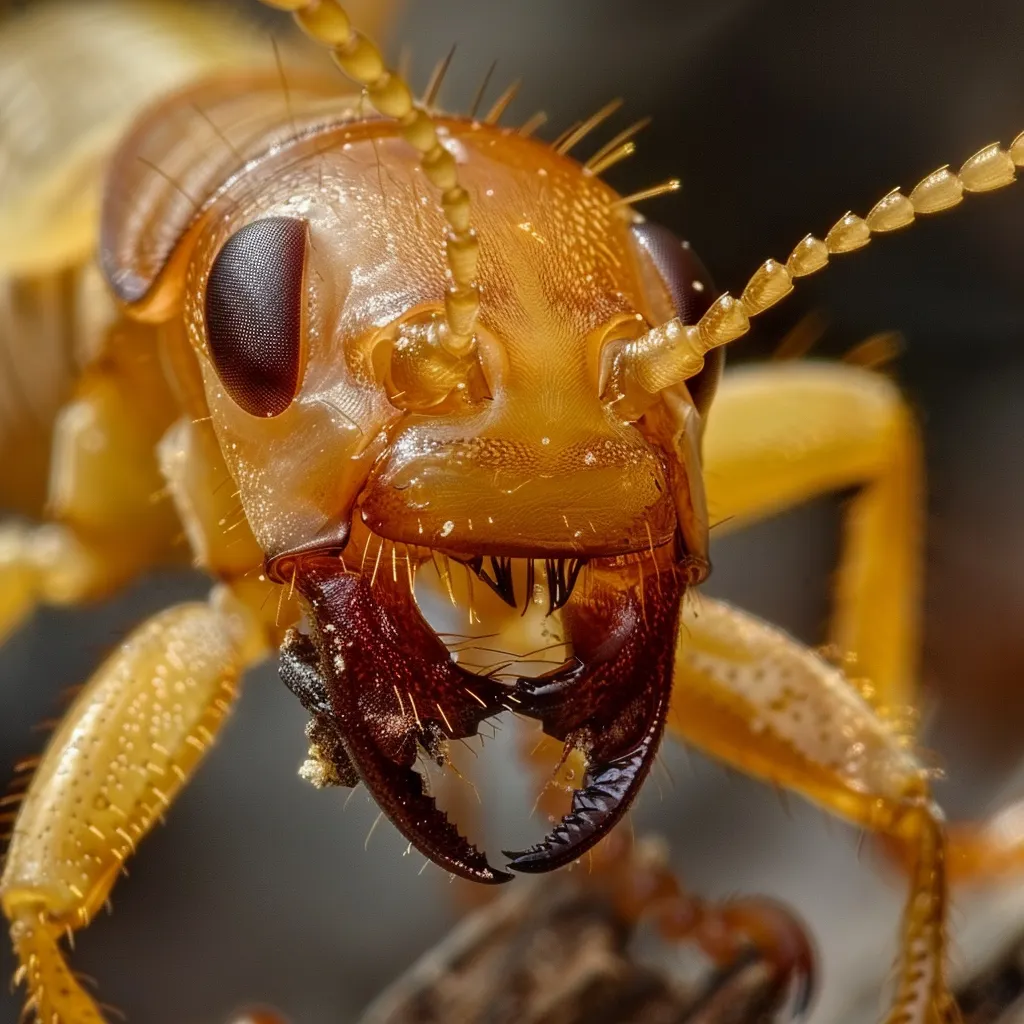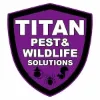Termites, often called the “silent destroyers,” can wreak significant havoc on structures in St. Louis, usually before homeowners are aware of their presence.
Termites are a significant concern for homeowners in St. Louis due to their potential to cause extensive damage to properties. At Titan Pest & Wildlife Solutions, we understand the importance of promptly identifying and addressing termite infestations. Contact us today if you notice signs of termites in your home or business.

Eastern Subterranean Termites in St. Louis
Eastern Subterranean Termites are the most common termites encountered in St. Louis. They live underground and are distinguished by forming some of the largest colonies among termite species in the United States. Their ability to construct intricate mud tubes is pivotal for their survival, as it helps retain moisture while they search for food. These termites primarily target wood in contact with soil or any wooden structures with untreated ground exposure, making them a significant threat to residential and commercial properties.
Key Characteristics
- Habitat: Live underground in large colonies.
- Behavior: Construct mud tubes to maintain moisture and protect themselves from open air.
Common Signs of Infestation
- Mud Tubes, typically found on external walls, are a clear indicator of Eastern Subterranean Termite activity.
- Hollowed-Out Wood: The wood affected by termites sounds hollow when tapped, suggesting that the termites have eaten away at it from the inside.
- Swarms: The presence of winged termites, especially in spring, indicates that termites are attempting to expand and establish new colonies.
Understanding the behavior and signs of Eastern Subterranean Termites is crucial for homeowners in St. Louis to take timely action against potential infestations. Early termite detection and professional intervention can prevent the significant structural damage these termites are known to cause.
Formosan Termites in St. Louis
Although Formosan termites are less common in St. Louis, their presence is particularly alarming due to their aggressive nature and destructive capabilities. Originating from East Asia, Formosan termites are an invasive species known for their rapid colony growth and the severe damage they can inflict on structures. These termites can infiltrate buildings through minor cracks in concrete or between joints and establish secondary colonies that do not require soil contact, making them especially formidable.
Key Characteristics
- Origin: Native to East Asia, invasive in other regions.
- Colony Growth: Known for rapid expansion and large colony sizes.
Common Signs of Infestation
- Softening Wood: Infested structures may show signs of softening wood, indicating internal damage.
- Frass: Accumulations of frass, or termite droppings, appear similar to sawdust.
- Swarms: Large swarms of winged termites at night, typically more significant than other termite species, signaling colony expansion.
Recognizing these signs early can be crucial in preventing the extensive damage that Formosan termites are known to cause. Given this termite species’ rapid and destructive nature, homeowners must consult pest control professionals if they suspect an infestation.
Drywood Termites in St. Louis
Drywood termites present a unique challenge as they directly infest dry wood and do not require contact with the soil, making them less dependent on moisture than their underground counterparts. This trait allows them to inhabit a broader range of wooden structures within a home, such as attic framing and furniture, which can lead to significant damage if left unchecked.
Key Characteristics
- Habitat: Dry wood is preferred, which they infest directly.
- Moisture Independence: Does not require soil contact or as much moisture as other types.
Common Signs of Infestation
- Fecal Pellets: Look for fecal pellets that resemble fine sawdust, which may accumulate beneath infested wood.
- Subtle Wood Damage: Unlike subterranean termites, dry wood termites leave fewer visible signs on the wood’s surface, making early detection more challenging.
Detection and Control of Termites in St. Louis
Detecting and controlling termite infestations in St. Louis involves diligent monitoring and proactive measures. Regular inspections are critical, particularly for older properties or those near wooded areas, where termites are more prevalent. During these inspections, professionals employ specialized tools that reveal hidden damage and help gauge the infestation’s extent.
Control Methods
- Soil Treatments: These involve applying termiticide to the soil around a property to establish a protective barrier.
- Wood Treatments: Direct application of termiticides to vulnerable wood surfaces to target active infestations.
- Bait Systems: Installed around the home’s perimeter, these systems use poisoned bait to eliminate colonies over time.
- Fumigation: This method is reserved for severe infestations and involves enclosing and treating the home with a lethal gas.
Prevention Tips
To prevent termite activity, specific strategies can be effectively implemented:
- Maintain Clearance: Allow an 18-inch clearance between the soil and your home’s wooden structures.
- Manage Moisture: Eliminate moisture around the foundation to make the environment less attractive to termites.
- Regular Inspections: Check basements and crawl spaces for signs of mud tubes and wood damage.
Combining regular inspections with these control and prevention strategies can help St. Louis homeowners protect their investments from the destructive capabilities of termites. By staying proactive about termite control, you can significantly reduce the likelihood of infestation and the damage that can follow.

